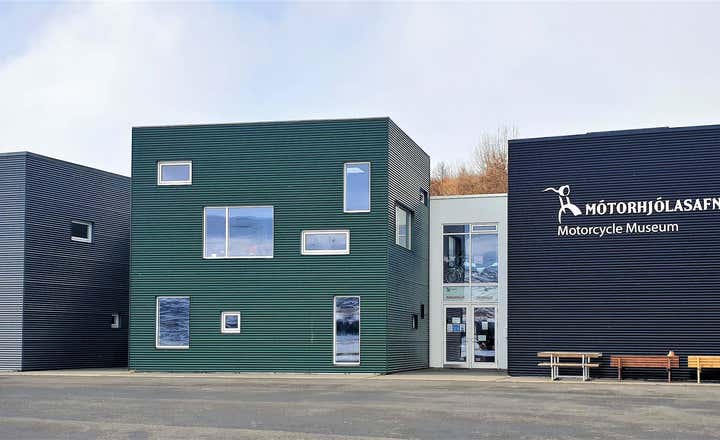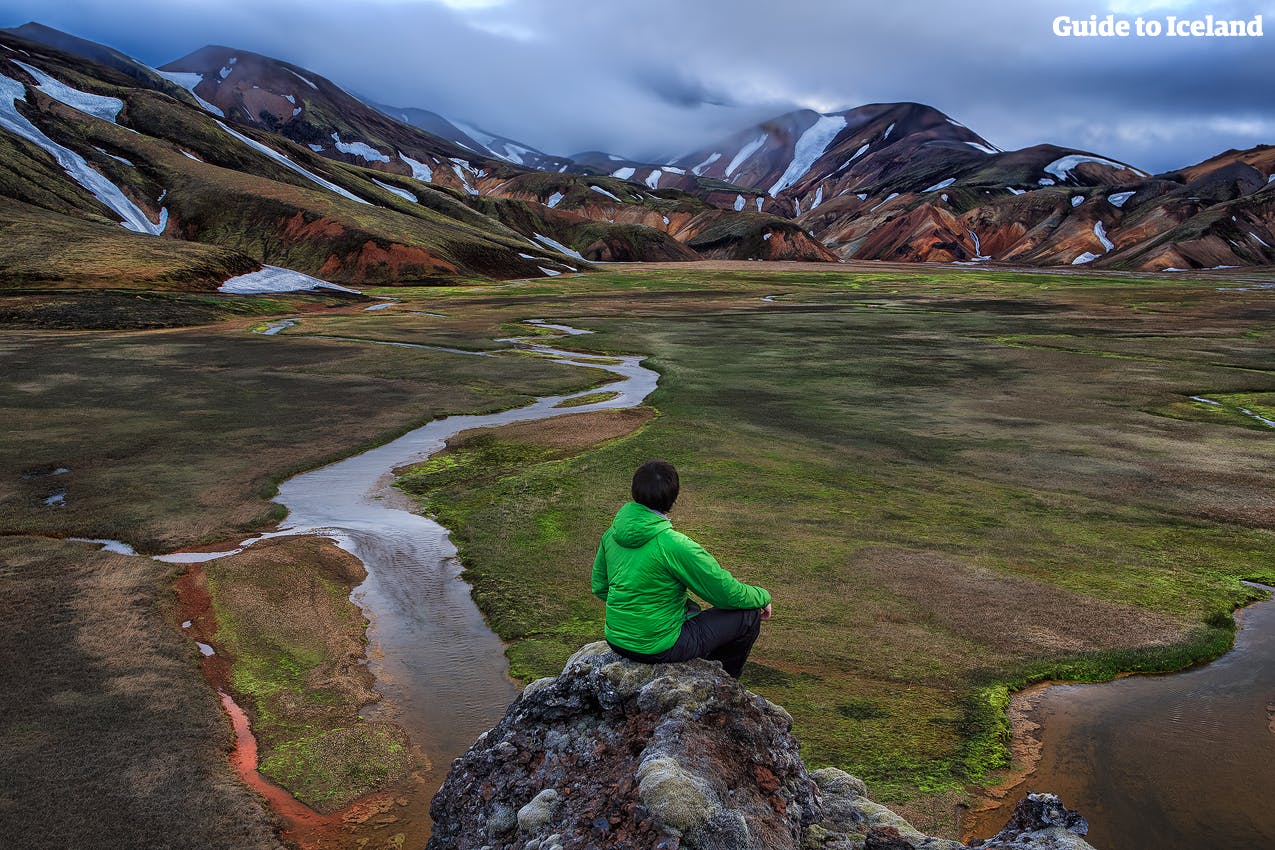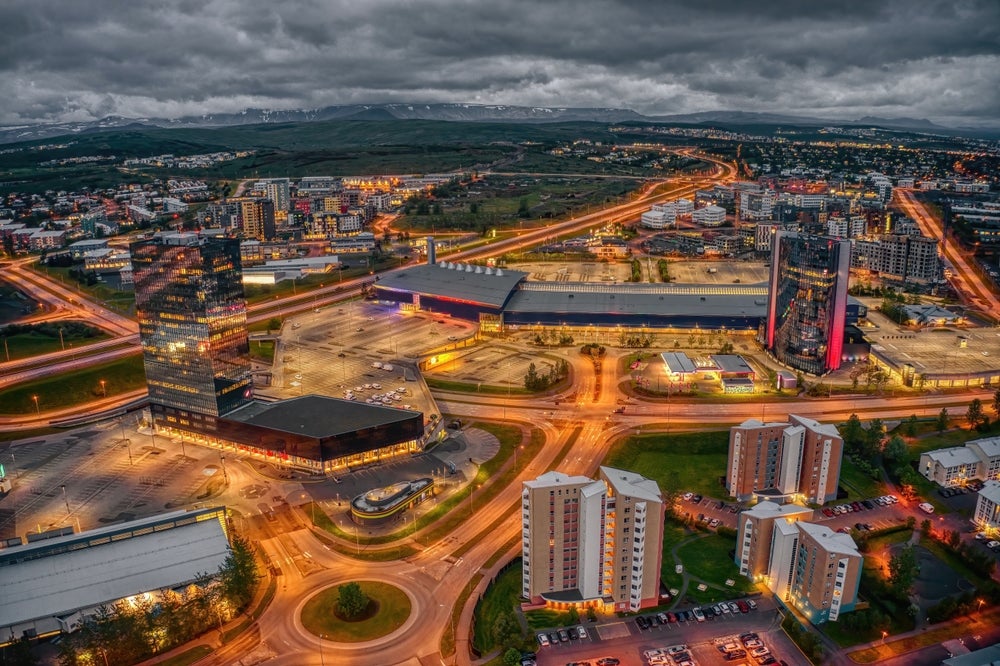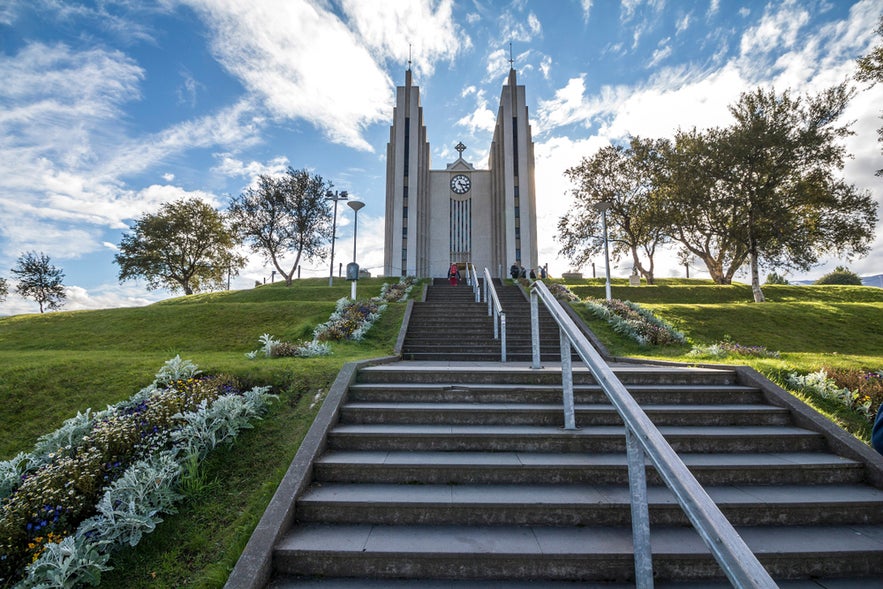
In Iceland, most visitors naturally gravitate toward the capital, Reykjavik, about 40 minutes from the country’s international gateway, Keflavik Airport. It’s easy to see why—Reykjavik is the heart of Icelandic culture, boasting the highest concentration of hotels, restaurants, bars, tours, and cultural landmarks in the country.
While spending a few days in Reykjavik is a great way to start your Icelandic adventure, anyone with a bit more time should venture further afield. A road trip around the island will reveal stunning natural wonders, charming fishing villages, and unforgettable sights.
Why You Can Trust Our Content
Guide to Iceland is the most trusted travel platform in Iceland, helping millions of visitors each year. All our content is written and reviewed by local experts who are deeply familiar with Iceland. You can count on us for accurate, up-to-date, and trustworthy travel advice.
One of the must-visit destinations is Akureyri, affectionately known as “Iceland’s Capital of the North.” Although Akureyri is Iceland’s second-largest city, calling it Akureyri city feels like a stretch—it has a population of just around 19,000 people, so it is actually a town.
Explore this unique town and its surroundings with Akureyri tours, offering a great way to experience local culture and natural beauty. Alternatively, many visitors choose to rent a car and embark on self-drive tours—a popular option that lets you explore at your own pace.
Despite its small size, Akureyri has developed a distinct culture all its own. The town is home to museums, art galleries, green spaces, and a community that shares many of the same passions as other Icelanders. So how did Akureyri earn its title as the “Capital of the North"? Let’s dive into the fascinating history that shaped this charming northern hub.
Key Takeaways
-
Iceland’s "Capital of the North": While Reykjavik often steals the spotlight, Akureyri is a vibrant town rich in history, culture, and stunning landscapes, making it a must-visit destination.
-
A Town Rooted in Viking History: With origins dating back to AD 890, Akureyri’s settlement history is intertwined with Iceland’s Viking heritage.
-
Cultural Hub of the North: The town boasts a thriving arts scene, including museums, galleries, and festivals offering a unique artistic experience.
-
Surrounded by Nature’s Wonders: Akureyri is perfectly located for exploring North Iceland’s natural beauty, with attractions like Godafoss Waterfall, Lake Myvatn, and Eyjafjordur Fjord, plus opportunities for whale watching and hiking.
-
A Year-Round Destination: Whether skiing in the winter, hiking in the summer, or enjoying the local culture, Akureyri offers a range of activities that make it an ideal year-round destination.
The History of Akureyri
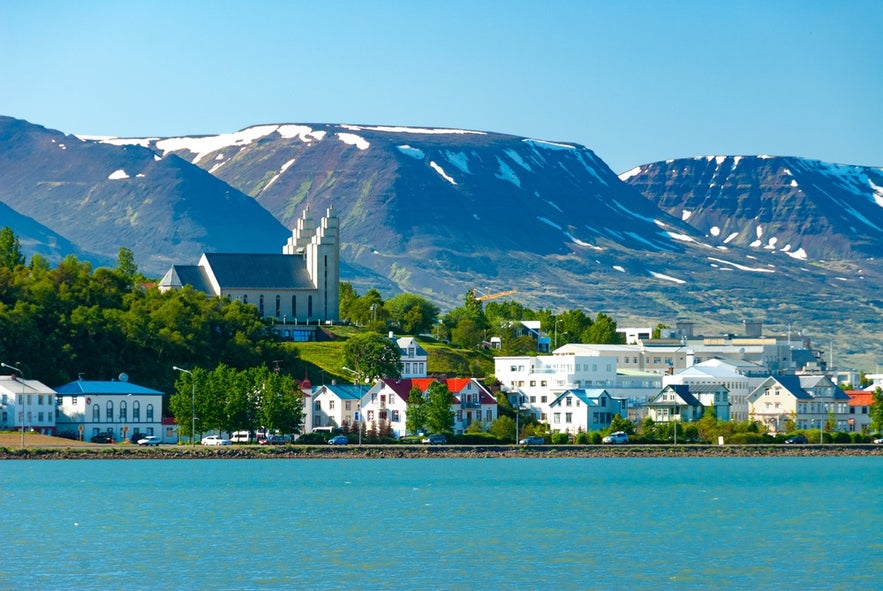 Akureyri is a blend of natural beauty, rich history, and vibrant culture. It is known for its cold winters that are snowier than Reykjavik, making it home to some of the best skiing locations in Iceland. Its summers are mild and pleasant, making it a great year-round destination with seasonal contrasts to explore and discover.
Akureyri is a blend of natural beauty, rich history, and vibrant culture. It is known for its cold winters that are snowier than Reykjavik, making it home to some of the best skiing locations in Iceland. Its summers are mild and pleasant, making it a great year-round destination with seasonal contrasts to explore and discover.
Icelandic history is deeply intertwined with its historic Sagas, the “Íslendingasögur,” which offer invaluable insight into the origins and culture of the Icelandic people. These sagas are a point of great pride, revered for their scope and accuracy, and provide the foundation for understanding the development of Iceland's settlements, including Akureyri.
The Age of Settlement
According to the Landnámabók (Book of Settlements), the first known settler in the Akureyri area was Helgi Magri Eyvindarson, an Irish Viking who arrived in the Eyjafjordur Fjord in AD 890. Helgi, born to an Irish mother and Norse father, sailed to Iceland with his wife, Thorunn Hyrna. While his exact reasons for settling in the area remain unclear, it’s believed that his unique blend of Christian and Norse beliefs influenced his decision.
Helgi spent his first winter at Hamundarstadir, located far west of modern-day Akureyri, before venturing into the northern regions of the island. As he established his estate, he lit a number of fires between Siglufjordur and Reynisnes, marking the removal of evil spirits and the formal establishment of his land.
In Norse tradition, fire, the sun, and heat were believed to be powerful forces against supernatural creatures such as trolls, elves, and hidden folk, beings that have long been woven into the fabric of Icelandic folklore.
Helgi established his estate, Kristna (Christ’s Peninsula), near what is now Akureyri. Helgi’s legacy endures as a key figure in the settlement of the northern region of Iceland, similar to Ingólfur Arnarson, who is regarded as the founder of Reykjavik.
The name “Akureyri” itself is shrouded in mystery. While numerous theories about its origin exist, the most widely accepted translation is “Field Sand-spit,” likely referring to a sheltered cornfield that once thrived in the region's narrow gullies.
- Learn the stories of Iceland's most notorious figures in The Most Infamous Icelanders of History.
- Uncover the rich tradition of myths and legends in Folklore in Iceland.
The Growth of Akureyri
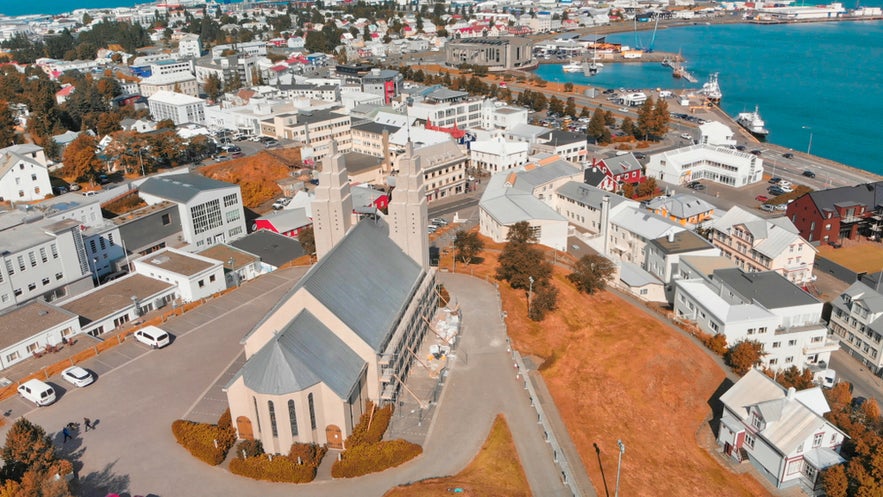 Although Akureyri’s history stretches back to the Age of Settlement, permanent settlement truly began in 1778. Before that, the area was mentioned in various historical records, including a particularly interesting case from 1562, in which a woman from Akureyri was convicted of adultery.
Although Akureyri’s history stretches back to the Age of Settlement, permanent settlement truly began in 1778. Before that, the area was mentioned in various historical records, including a particularly interesting case from 1562, in which a woman from Akureyri was convicted of adultery.
The scandal was notable because, at the time, the woman was caught without a marriage license—a serious offense in Iceland’s strict society. This glimpse into early social life in Akureyri reflects the modest yet dynamic beginnings of the area.
In the mid-16th century, the only buildings in Akureyri were shops and warehouses owned by Danish merchants. During this time, Iceland was still a territory of the Danish monarchy, and Icelanders were subject to the Danish Crown. While this arrangement sometimes caused tension, it facilitated trade, technology, and communication across the country at the time.
Akureyri’s natural harbor made it a prime location for trade, but the seasonal nature of the merchants’ presence in the area meant growth was slow. The Danish merchants would return home each winter, leaving the settlement largely inactive during the colder months.
Akureyri was designated an official trading post in 1602, but real development didn’t take off until later. The first permanent house was built in 1778 after the Danish merchants were granted permission to reside in Akureyri during the winter. By 1786, the town received its municipal charter, solidifying its status as a recognized settlement.
The Danish merchants also introduced farming techniques, which allowed for the cultivation of crops that had previously been impossible in the region. By 1800, Icelanders were successfully harvesting potatoes, marking a significant agricultural breakthrough for the region.
Despite this support, Akureyri’s population growth was slow. In fact, by 1836, the Danish Crown revoked the town’s municipal charter due to disappointing population numbers. It was a blow to the town’s development, and for the next few decades, Akureyri existed as an unofficial outpost. However, the charter was reinstated in 1862, sparking a new era of growth for the town.
- Learn about the symbolism and significance behind Iceland’s national symbol in The Icelandic Flag: A Tale of Identity.
Akureyri in the 19th Century
By the end of the 19th century, Akureyri began to evolve into a bustling town. Despite British writer Ethel Brilliana Tweedie’s bleak description of the town during her visit in 1888, recorded in her book A Girl’s Ride in Iceland, where she noted the "sad, dejected" appearance of the locals, Akureyri’s strategic location in Eyjafjordur, with its fertile land and natural harbor, started to draw settlers. Its increasing prominence in Iceland’s fishing and agricultural industries fueled the town's growth.
The formation of the Eyjafjordur Co-operative Society played a crucial role in Akureyri’s growth. This group of local farmers and traders negotiated fiercely with Danish merchants, improving the town's economic and living conditions. Agriculture, fishing, and trade became integral parts of the economy, with the population reaching 1,370 people by 1900.
Despite this growth, Akureyri still faced significant challenges. The lack of modern infrastructure made life difficult for many of its residents. Yet the town was beginning to establish itself as a vital hub in Iceland's northern region.
Modernization and WWII Impact
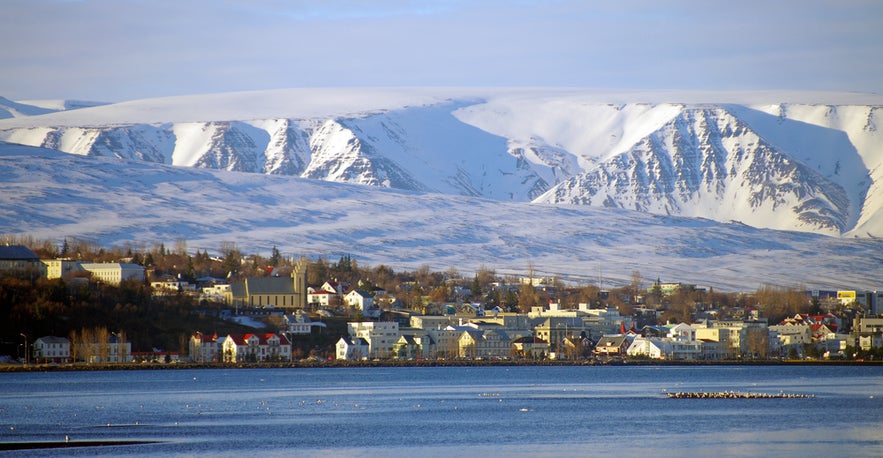 Akureyri’s modernization accelerated during World War II, when Iceland’s strategic location attracted foreign troops. The town served as a key base for the Norwegian-British No. 330 Squadron of the Royal Air Force, which used Catalina flying boats and Northrop N3P-B aircraft to protect Allied shipping routes between Europe and the United States.
Akureyri’s modernization accelerated during World War II, when Iceland’s strategic location attracted foreign troops. The town served as a key base for the Norwegian-British No. 330 Squadron of the Royal Air Force, which used Catalina flying boats and Northrop N3P-B aircraft to protect Allied shipping routes between Europe and the United States.
The presence of foreign troops not only brought infrastructure development but also exposed Icelanders to the broader world.
By the end of the war, Akureyri had developed critical industries—particularly fishing and agriculture. The town had solidified its importance in Iceland’s northern region and was beginning to emerge as a thriving center of commerce and culture. The war marked a turning point for Akureyri, with modern infrastructure becoming a necessity rather than a luxury.
By the mid-20th century, Akureyri had transformed into a modern, thriving town, setting the stage for the vibrant town we know today. Both domestic and international influences bolstered its continued growth and development, making it a vital part of Iceland’s national identity.
- Discover more about Iceland's global connections and its role on the world stage in International Relations of Iceland.
Akureyri Now: Where Modernity Meets Tradition
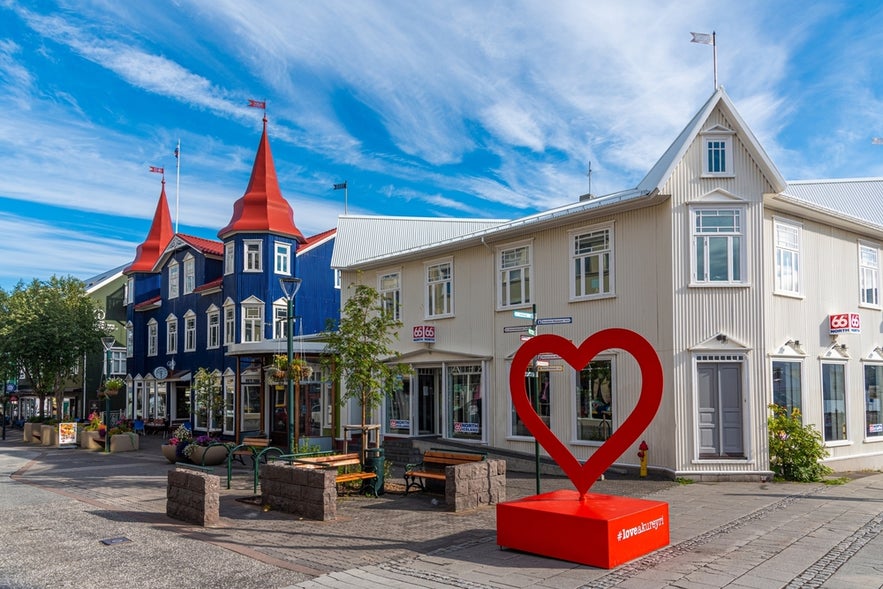 So what does Akureyri have to offer today? How has this small town evolved to rightfully claim its title as Iceland’s northern capital? What distinguishes it from Reykjavik, and what unique cultural experiences can visitors expect?
So what does Akureyri have to offer today? How has this small town evolved to rightfully claim its title as Iceland’s northern capital? What distinguishes it from Reykjavik, and what unique cultural experiences can visitors expect?
With a population of around 19,000, Akureyri is one of Iceland’s must-visit destinations. The town has transformed in recent years, fueled by the booming tourism industry, which has allowed for significant modernization and infrastructure development.
While many visitors come for Akureyri’s natural beauty—whale watching, hiking, and basking on Lake Myvatn—there’s much more to experience.
Akureyri’s rich and vibrant cultural scene truly sets it apart. The town's history, combined with its growing artistic community, makes it a unique cultural hub in the north. Whether you’re visiting its museums, galleries, or festivals, there’s always something new to discover.
- Check out the Top Things To Do in Akureyri to make the most of your visit to this northern hub.
Akureyri’s Top Attractions: Nature, Music, and More
Akureyri is a dynamic destination where nature, culture, and adventure come together. Beyond its vibrant art scene and fascinating museums, the town is surrounded by breathtaking landscapes—from the tranquil waters of Eyjafjordur to the volcanic formations of nearby Lake Myvatn.
Akureyri has something for everyone, from enjoying live music and local festivals to hiking through scenic trails.
Akureyri Art Museum
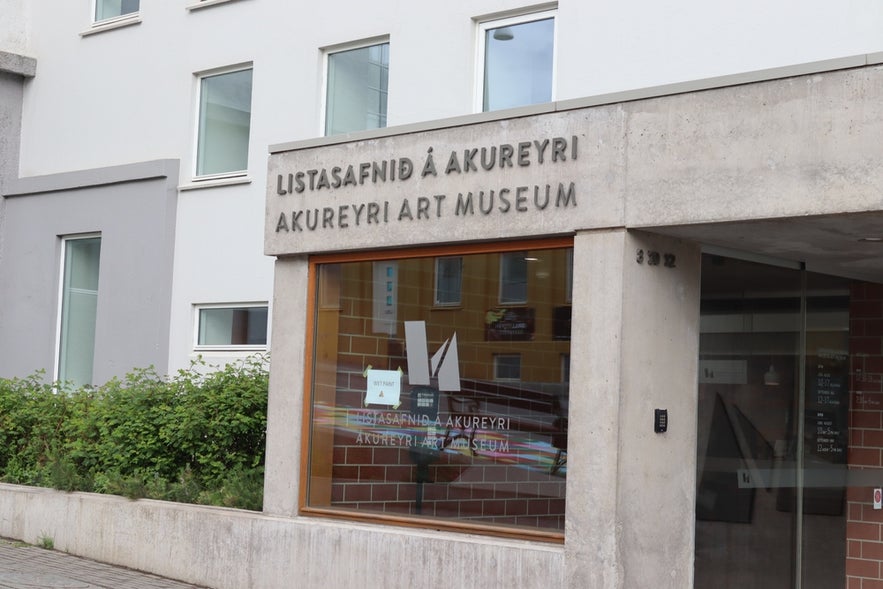 Address: Kaupvangsstraeti 8-12, 600 Akureyri, Iceland
Address: Kaupvangsstraeti 8-12, 600 Akureyri, Iceland
Opening Hours: Monday to Friday, 10:00 AM–5:00 PM; Saturday and Sunday, 1:00 PM–5:00 PM
Opened in 1993, the Akureyri Art Museum is a cornerstone of the town’s cultural offerings, showcasing contemporary Icelandic art in a variety of mediums. It’s a hub for established and emerging artists, and its exhibitions reflect the evolving nature of Icelandic culture. The museum's focus on modern art makes it a must-see for those looking to experience the cutting edge of Icelandic creativity.
Akureyri Museum
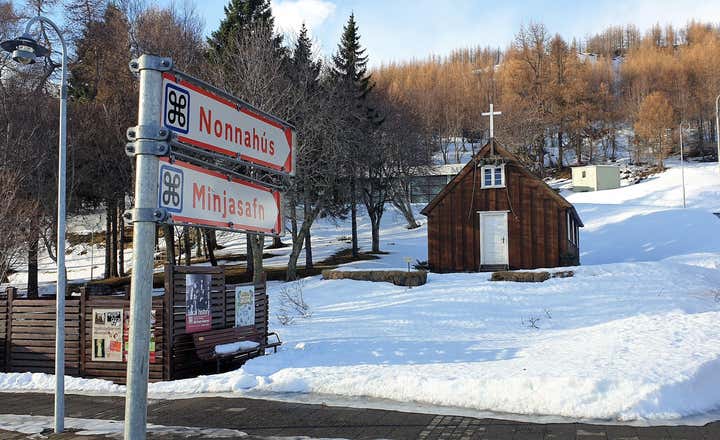
Opening Hours: Monday to Saturday, 10:00 AM–5:00 PM
The Akureyri Museum is a perfect stop for those interested in exploring the town’s history. It offers a deep dive into Akureyri’s story of settlement, growth, and development, providing context for how the town became the vibrant cultural hub it is today. Through its exhibits, visitors can learn about the early settlers and Akureyri’s evolution over time.
The Icelandic Aviation Museum
 Address: Akureyri Airport, 600 Akureyri, Iceland
Address: Akureyri Airport, 600 Akureyri, Iceland
Opening Hours: Open daily, 1:00 PM–4:00 PM (hours may vary, check website for updates)
For something a bit different, the Icelandic Aviation Museum highlights Iceland's aviation history. With exhibits on the early days of flight and the evolution of aviation in the region, the museum, located at the Akureyri Airport, offers an insider look at Iceland’s role in global aviation.
The Motorcycle Museum of Iceland
Address: Krokeyri 2, 600 Akureyri, Iceland
Opening Hours: Monday to Saturday, 1:00 PM–5:00 PM (closed Sundays)
The Motorcycle Museum of Iceland offers an impressive collection of vintage motorcycles. It showcases Iceland's unique relationship with transport and technology, with a focus on the development of motorcycles in Iceland. The museum is an excellent stop for enthusiasts and anyone curious about the history of motor vehicles in the country.
- For more fascinating insights into Icelandic history and culture, visit History & Culture of Iceland.
Akureyrarkirkja Church
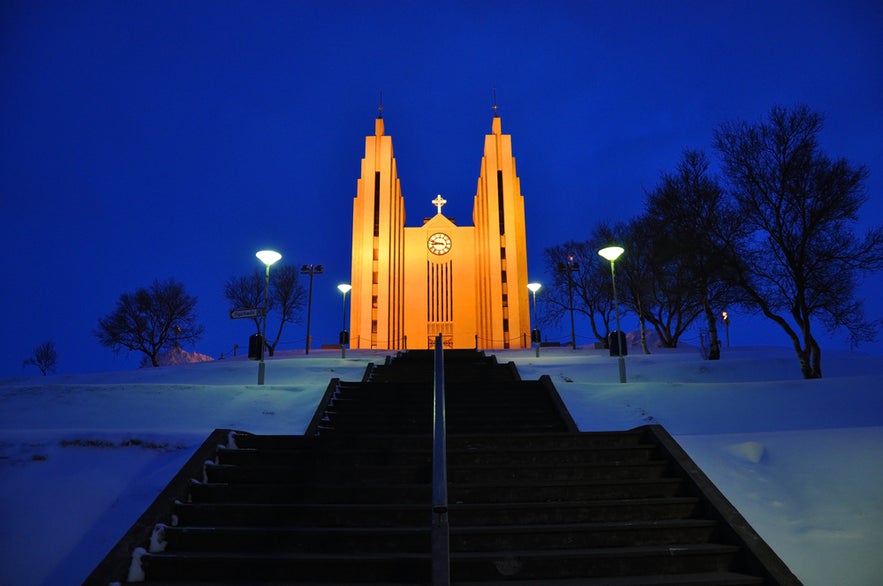 One of Iceland’s most iconic landmarks, Akureyrarkirkja Church, is an impressive example of Icelandic architecture, designed by renowned architect Guðjón Samúelsson. Inspired by Iceland’s basalt rock formations, the church's distinctive facade makes it a must-see for visitors. With its tall steeple and intricate design, the church offers architectural beauty and views of the surrounding town and fjord.
One of Iceland’s most iconic landmarks, Akureyrarkirkja Church, is an impressive example of Icelandic architecture, designed by renowned architect Guðjón Samúelsson. Inspired by Iceland’s basalt rock formations, the church's distinctive facade makes it a must-see for visitors. With its tall steeple and intricate design, the church offers architectural beauty and views of the surrounding town and fjord.
Akureyri Botanical Gardens
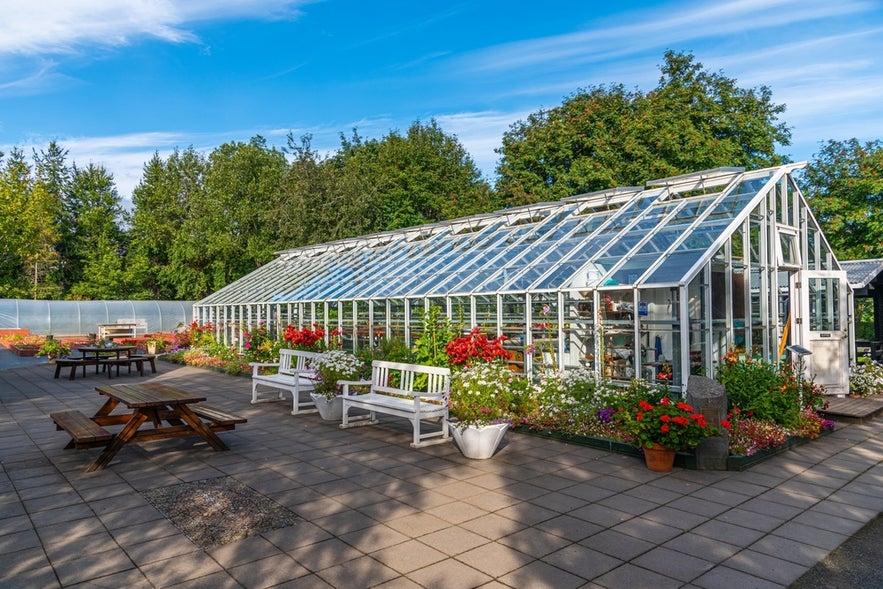 The Akureyri Botanical Gardens are a tranquil retreat in the heart of the town. Home to over 7,000 plant species, this lush garden is a peaceful escape for nature lovers and a wonderful place to stroll. The gardens are especially known for their diverse collection of native and non-native plants, offering a serene experience throughout the year.
The Akureyri Botanical Gardens are a tranquil retreat in the heart of the town. Home to over 7,000 plant species, this lush garden is a peaceful escape for nature lovers and a wonderful place to stroll. The gardens are especially known for their diverse collection of native and non-native plants, offering a serene experience throughout the year.
While exploring the gardens, make sure to stop by LYST, one of the best cafes in Akureyri, located nearby. With its cozy atmosphere and delicious offerings, LYST is the perfect spot to relax and enjoy a coffee or light meal after your visit to the gardens.
Akureyri Municipal Library
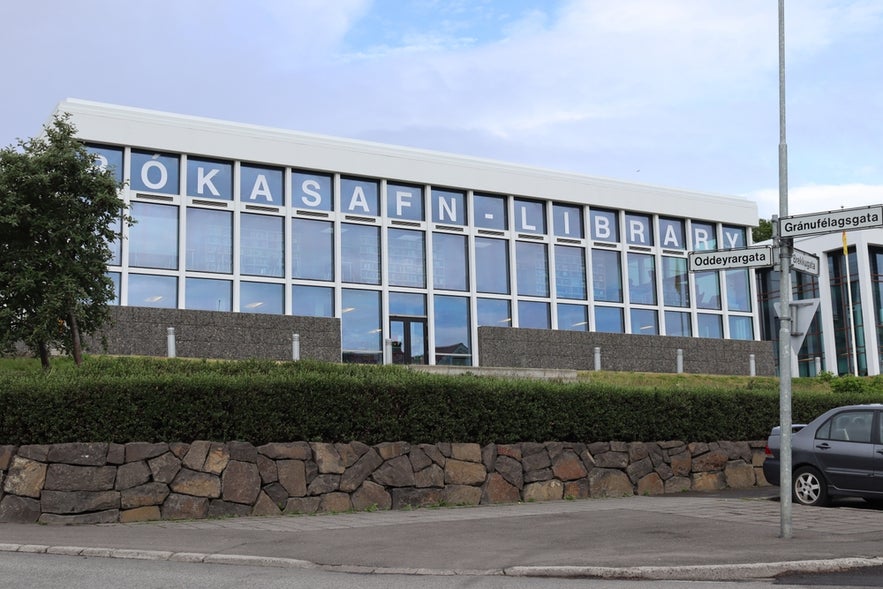 Established in 1827, the Akureyri Municipal Library (Amtsbokasafnid) is one of Iceland's oldest public libraries. It serves as a vital cultural hub in Akureyri and offers an extensive collection of books, magazines, audiovisual materials, and digital resources.
Established in 1827, the Akureyri Municipal Library (Amtsbokasafnid) is one of Iceland's oldest public libraries. It serves as a vital cultural hub in Akureyri and offers an extensive collection of books, magazines, audiovisual materials, and digital resources.
Visitors can enjoy various services, including reading areas, study spaces, and a cafe named Ordakaffi, which serves meals and refreshments.
The library also hosts exhibitions, lectures, and workshops, catering to diverse interests and age groups. Its commitment to promoting knowledge and community engagement makes it a cornerstone of Akureyri's cultural landscape.
Christmas House (Jolahusid)
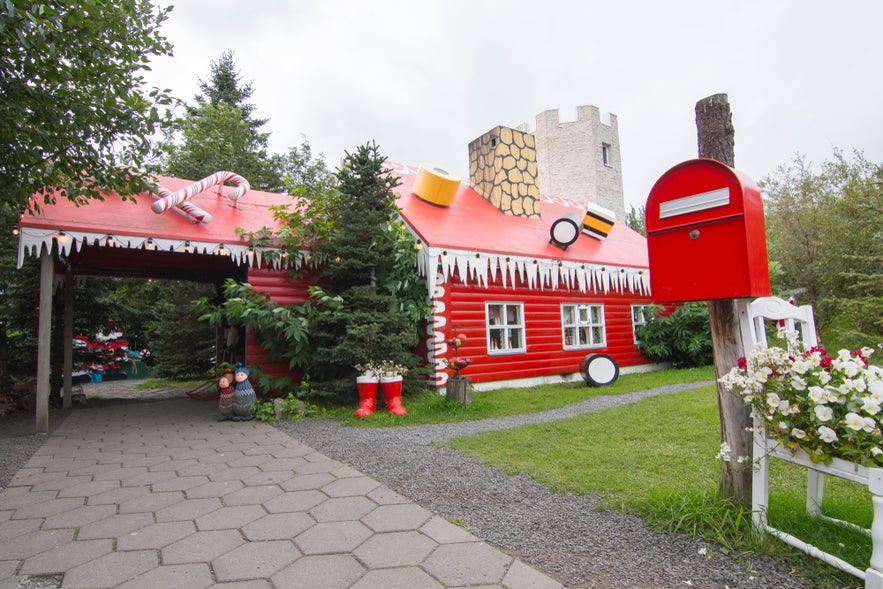 If you’re in Akureyri during the holiday season—or even if you’re not—be sure to visit the Christmas House. This charming, year-round Christmas store celebrates the magic of the holidays with festive decorations, gifts, and a cozy, wintery atmosphere.
If you’re in Akureyri during the holiday season—or even if you’re not—be sure to visit the Christmas House. This charming, year-round Christmas store celebrates the magic of the holidays with festive decorations, gifts, and a cozy, wintery atmosphere.
Located just outside Akureyri, the Christmas House offers visitors a chance to experience the joy and warmth of Christmas no matter the time of year. This is the place to be if you’re looking for unique Christmas ornaments, handmade gifts, or simply want to enjoy some holiday spirit.
Whale Watching
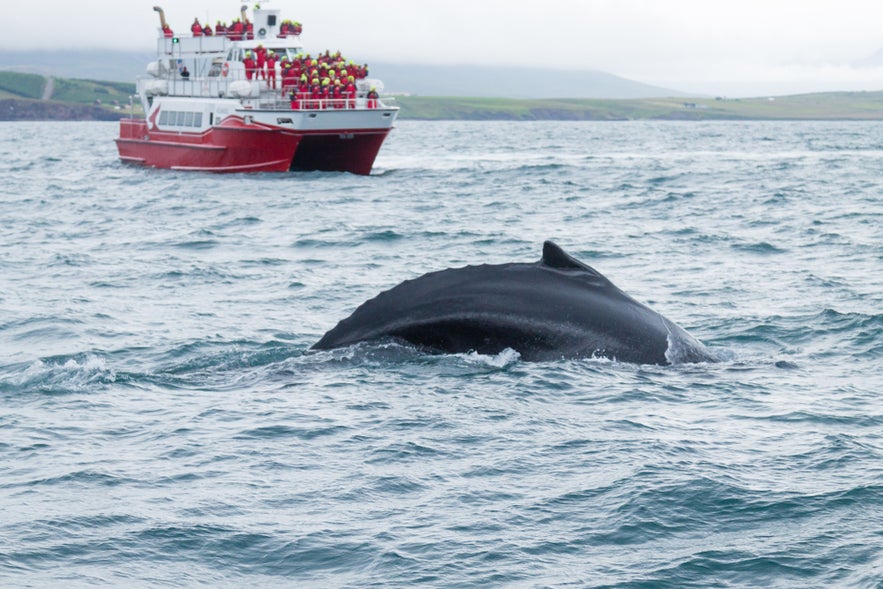 Akureyri is one of the best places in Iceland for whale watching—particularly Eyjafjordur. Visitors can spot a variety of whale species, including humpback whales, minke whales, and even the occasional blue whale. Join an Akureyri whale watching tour for the chance to experience these majestic creatures in their natural habitat.
Akureyri is one of the best places in Iceland for whale watching—particularly Eyjafjordur. Visitors can spot a variety of whale species, including humpback whales, minke whales, and even the occasional blue whale. Join an Akureyri whale watching tour for the chance to experience these majestic creatures in their natural habitat.
Hof Cultural Center
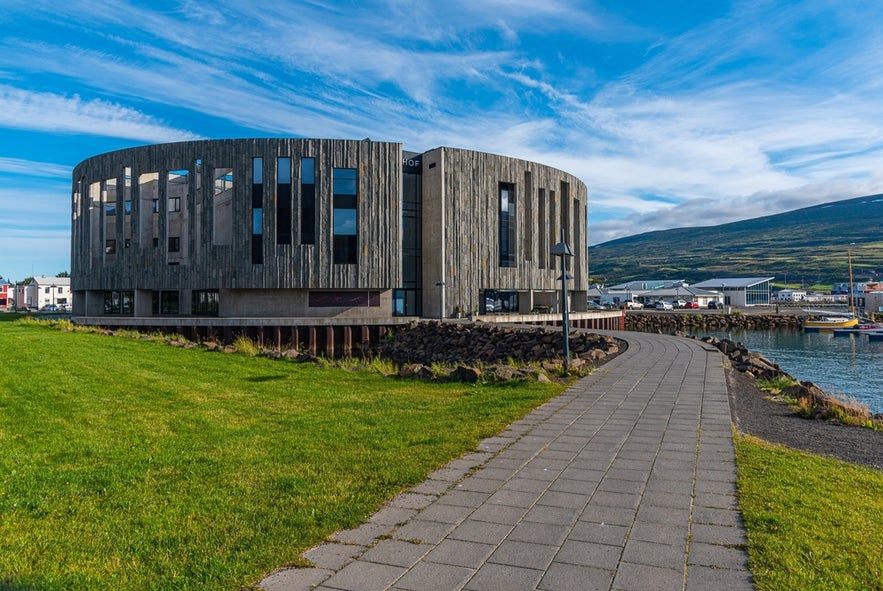 The Hof Cultural Center is a modern venue in Akureyri that plays a key role in the town’s cultural scene. Hosting concerts, exhibitions, and a wide range of cultural events throughout the year, Hof is a hub for both locals and visitors to experience live performances and artistic showcases. Its contemporary design makes it a striking addition to Akureyri’s cultural landscape.
The Hof Cultural Center is a modern venue in Akureyri that plays a key role in the town’s cultural scene. Hosting concerts, exhibitions, and a wide range of cultural events throughout the year, Hof is a hub for both locals and visitors to experience live performances and artistic showcases. Its contemporary design makes it a striking addition to Akureyri’s cultural landscape.
The Toy Museum at Fridi Bjarnarhus
The Toy Museum at Fridi Bjarnarhus is a charming destination for both children and adults, offering a nostalgic journey through Icelandic history via toys from past decades. Located in a historic house, the museum features a diverse collection of toys spanning several generations, showcasing the cultural significance of play throughout the years.
With its cozy atmosphere and carefully curated exhibits, the Toy Museum is a unique and delightful experience for families and those interested in Icelandic heritage.
Ein Med Ollu Akureyri International Music Festival
While Akureyri once hosted the Akureyri International Music Festival, which attracted global musicians and music lovers, it hasn’t been held since 2009. Today, one of the standout music events in the city is Ein Med Ollu, a locally focused festival that celebrates Icelandic music and culture. Featuring a range of performances by both emerging and established artists, this festival offers a unique opportunity for visitors to immerse themselves in Akureyri’s vibrant arts scene.
- Explore Iceland’s exciting festival calendar and discover the Top 25 Festivals in Iceland for unforgettable cultural experiences across the country.
Accommodations in Akureyri
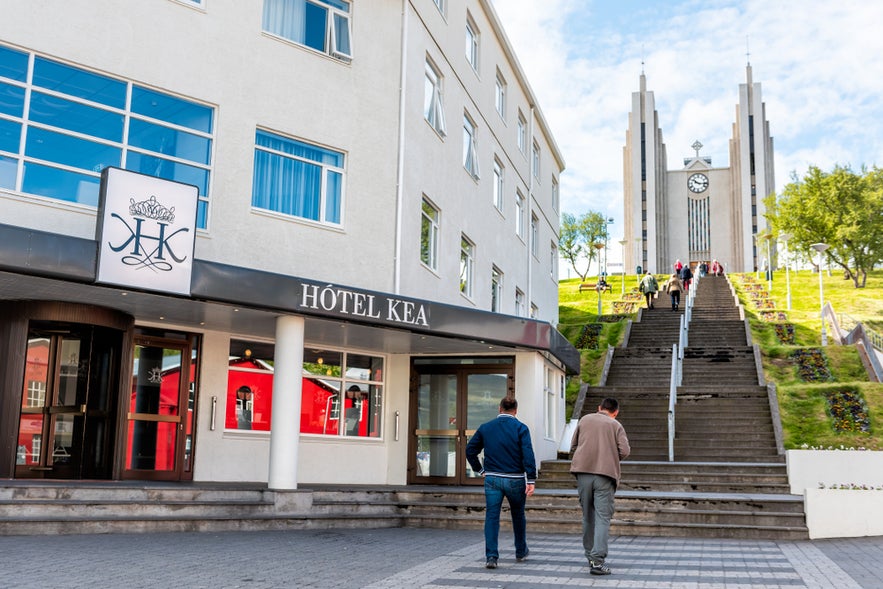 The "Capital of the North" has a diverse range of accommodations to suit various preferences and budgets. Here are some of our picks:
The "Capital of the North" has a diverse range of accommodations to suit various preferences and budgets. Here are some of our picks:
-
Hotel Akureyri – Located near the harbor, it has comfortable rooms with private bathrooms and an in-house restaurant.
-
Hotel Halond – A beautiful hotel with panoramic views and proximity to outdoor attractions like Hlidarfjall Mountain.
-
Torg Guesthouse – A cozy guesthouse with single, double, twin, and triple rooms, ideal for a budget-friendly stay.
-
Hotel Kea – A charming hotel located in the heart of Akureyri, offering elegant rooms, modern amenities, and a fantastic restaurant.
-
Hotel Natur – A family-run hotel near Eyjafjordur, featuring a hot tub, panoramic views, and proximity to the Diamond Circle route.
Dining in Akureyri
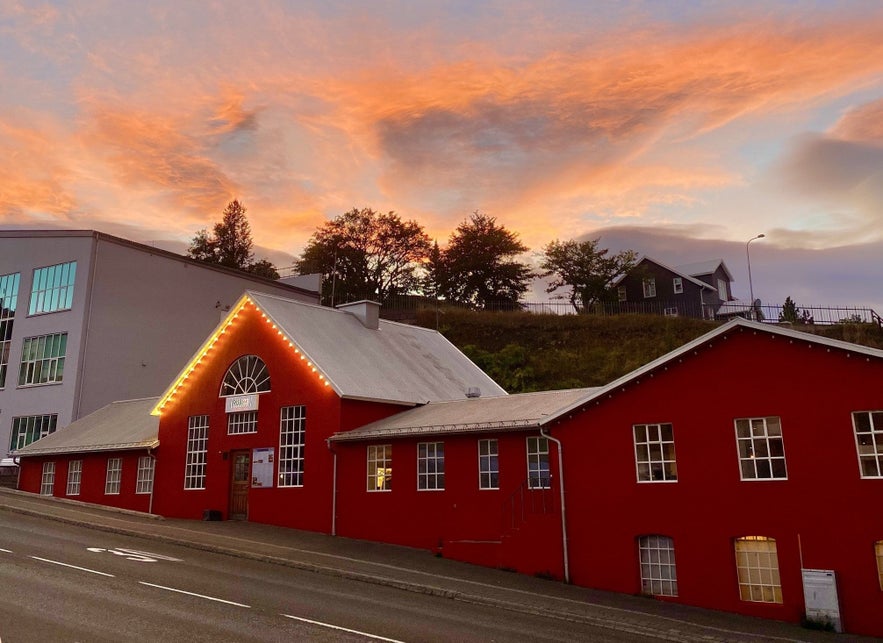
-
Strikið: Located on the fifth floor of a building with harbor views, Strikið’s menu features Nordic sushi variations, cured cod with yuzu sorbet, and an "Arctic pizza" topped with North Atlantic char, pickled beetroot, goat cheese, and pesto.
-
Rub 23: Known for its fresh seafood and sushi, Rub 23 provides a modern dining experience focusing on local ingredients.
-
Kaffi Ilmur: A cozy cafe with a selection of pastries, sandwiches, and specialty coffees, perfect for a casual meal or afternoon break.
-
Bautinn: A popular spot among locals, Bautinn serves traditional Icelandic dishes in a warm and inviting atmosphere.
-
Akureyri Fish and Chips: For a casual dining experience, come try the fresh fish and chips with a variety of dipping sauces.
- For more dining options, check out the Best Restaurants in Akureyri and discover the top spots to enjoy delicious meals.
Tours and Activities Around Akureyri
Akureyri serves as a gateway to numerous tours and activities that highlight the natural beauty and cultural richness of North Iceland. Here are some of our recommendations:
-
Godafoss Waterfall Tour and Forest Lagoon Bathing – Take a five-hour guided excursion from Akureyri Port to witness the majestic Godafoss Waterfall, known as the "Waterfall of the Gods," and unwind in the tranquil Forest Lagoon, a geothermal spa nestled amidst lush surroundings.
-
8-Hour Diamond Circle Shore Excursion – Embark on an 8-hour guided tour from Akureyri Port, exploring North Iceland's natural wonders, including Godafoss Waterfall, Asbyrgi Canyon, Dettifoss Waterfall, the fishing village of Husavik, the Tjornes viewing platform, the Namaskard Geothermal Area, and a viewpoint over Lake Myvatn.
-
Lake Myvatn Sightseeing & Hot Springs Tour – Experience North Iceland's natural treasures on a 9-hour guided journey from Akureyri to the Lake Myvatn region, exploring geological wonders such as Godafoss Waterfall, Skutustadagigar Pseudo Craters, Dimmuborgir Lava Formations, and the Hverir Geothermal Area. The tour concludes with a relaxing soak at the Earth Lagoon, often called the "Blue Lagoon of the North."
-
6-Hour Arctic Coastline and Trollaskagi Peninsula Tour With Transport – Explore the scenic Arctic Coast Way along Eyjafjordur Fjord on a 6-hour guided tour from Akureyri. Visit the charming villages of Olafsfjordur and Siglufjordur, known for their rich fishing heritage and rugged landscapes. The tour also includes a relaxing soak in the natural hot tubs of Husavik, offering beautiful waterfront views.
Explore Beyond Akureyri
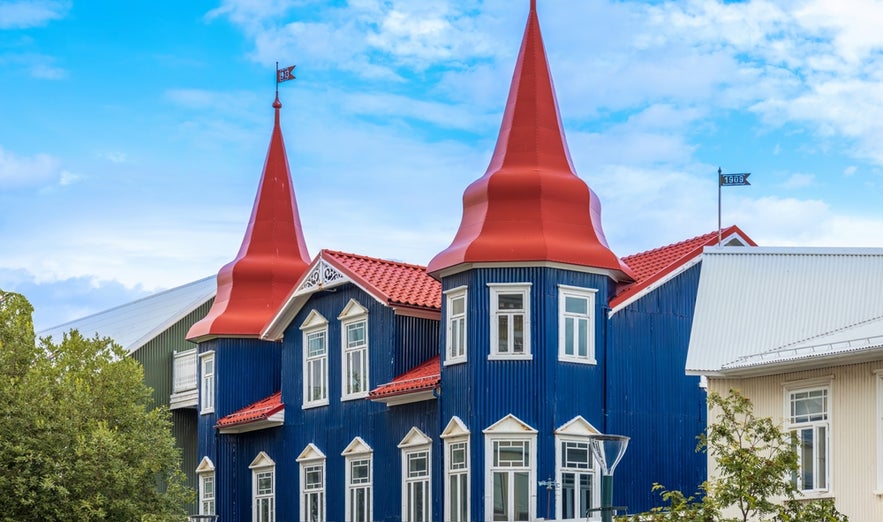 Akureyri offers plenty to explore, but the surrounding region is equally captivating. A short drive from the town, you’ll find two destinations that offer stunning natural landscapes.
Akureyri offers plenty to explore, but the surrounding region is equally captivating. A short drive from the town, you’ll find two destinations that offer stunning natural landscapes.
Lake Myvatn
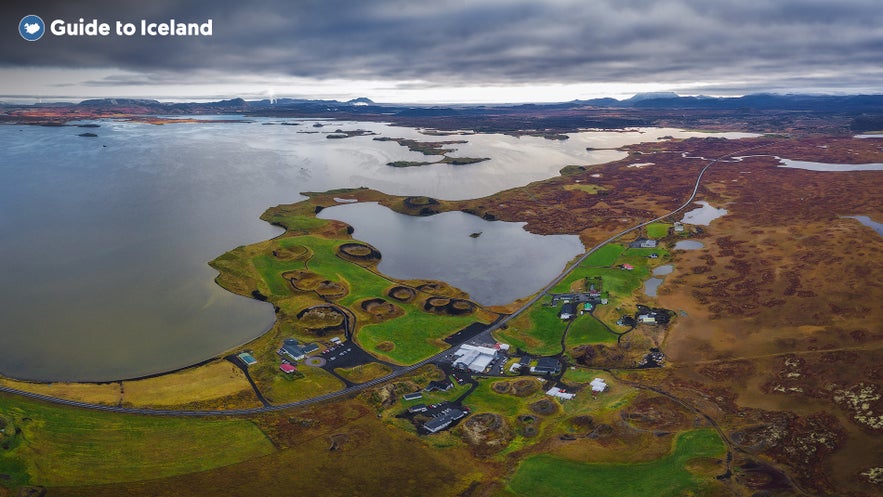 Lake Myvatn lies 50 miles (80 kilometers) from Akureyri and is one of Iceland’s beautiful natural wonders, known for its geothermal activity, volcanic features, and rich birdlife. The area is a haven for nature lovers, and visitors can explore the lake’s bubbling mud pools, steam vents, and lava formations before relaxing in the Earth Lagoon, formally known as Myvatn Nature Baths.
Lake Myvatn lies 50 miles (80 kilometers) from Akureyri and is one of Iceland’s beautiful natural wonders, known for its geothermal activity, volcanic features, and rich birdlife. The area is a haven for nature lovers, and visitors can explore the lake’s bubbling mud pools, steam vents, and lava formations before relaxing in the Earth Lagoon, formally known as Myvatn Nature Baths.
It’s an excellent spot for hiking, photography, and immersing yourself in Icelandic nature.
Husavik
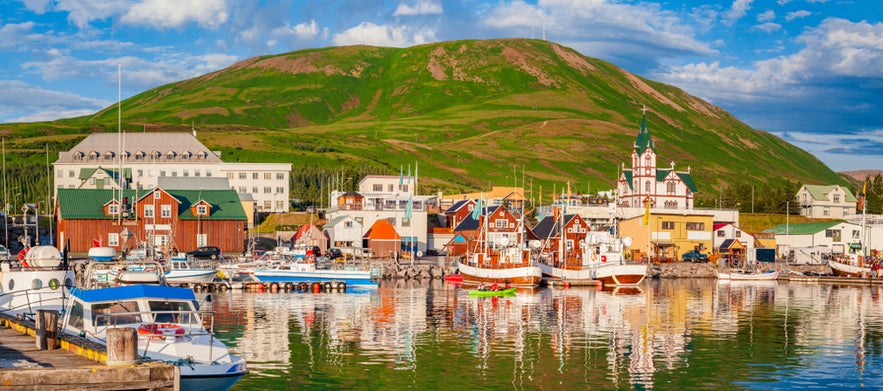 Located 55 miles (89 kilometers) from Akureyri, Husavik is renowned as one of the best places in Iceland for whale watching. The town’s sheltered harbor provides easy access to the waters of Skjalfandi Bay, where you can spot humpback whales, minke whales, and more.
Located 55 miles (89 kilometers) from Akureyri, Husavik is renowned as one of the best places in Iceland for whale watching. The town’s sheltered harbor provides easy access to the waters of Skjalfandi Bay, where you can spot humpback whales, minke whales, and more.
Husavik is also home to the Whale Museum, where you can learn more about these majestic mammals and the history of whale watching in Iceland.
Frequently Asked Questions About Akureyri
If you’re planning a visit to North Iceland and are curious about the charming northern hub, these frequently asked questions are for you.
1. What makes Akureyri worth visiting?
Akureyri is known for its beautiful setting on Eyjafjordur Fjord, rich cultural life, and easy access to natural wonders like Godafoss Waterfall and Lake Myvatn. Visitors love its museums, whale watching, botanical gardens, and vibrant year-round festivals, all in a relaxed small-town setting.
2. How old is Akureyri, and how did it start?
Akureyri’s roots go back to a Viking settlement in AD 890, but it became a permanent trading town in the 18th century. Over the years, it grew through agriculture, trade, and modernization, especially during and after WWII.
3. Where is Akureyri, and how do I get there?
Akureyri, Iceland, is located in the northern part of the country, approximately 230 miles (370 kilometers) from Reykjavik. It sits on the shores of Eyjafjordur, Iceland's longest fjord. You can reach Akureyri by car, with a drive that takes around 4.5 to 5 hours from Reykjavik.
For a quicker, more convenient option, you can take a domestic flight from Reykjavik to Akureyri Airport.
4. What is the climate like in Akureyri?
Akureyri has a subarctic climate, with cold winters and mild summers. Expect average temps from 26°F (-3°C) in winter to 54°F (12°C) in summer. Long daylight hours in summer and snow in winter make it great for seasonal experiences.
5. How do I pronounce Akureyri?
The pronunciation of Akureyri can be tricky for non-native speakers. It’s pronounced as "AH-koo-rey-ree" (with the "ey" sound similar to the English "ay" in "say"). The emphasis is on the first syllable, and the "r" is rolled, typical of Icelandic pronunciation.
6. Is Akureyri a good base for exploring North Iceland?
Yes, Akureyri is an excellent base for exploring the north side of the country. It is centrally located near several top attractions, including Lake Myvatn, Godafoss Waterfall, and the Diamond Circle route.
From Akureyri, visitors can easily access nearby towns, hiking trails, and scenic areas like Husavik for whale watching and the Trollaskagi Peninsula for coastal exploration.
Akureyri Awaits You
Akureyri is a destination where history, culture, and nature harmoniously combine. Whether you’re drawn to its fascinating Viking past, its role in Icelandic culture, or the abundance of outdoor adventures, Akureryi has something for everyone.
As the northern hub of Iceland, Akureyri is a must-visit for those seeking a deeper connection with Iceland’s heritage. Pack your bags, hit the road, and explore everything Akureyri has to offer—the “Capital of the North” awaits!
What activities or locations did you enjoy the most? Do you have any recommendations for future visitors? Share your thoughts and questions in the comments below—we look forward to hearing from you.

